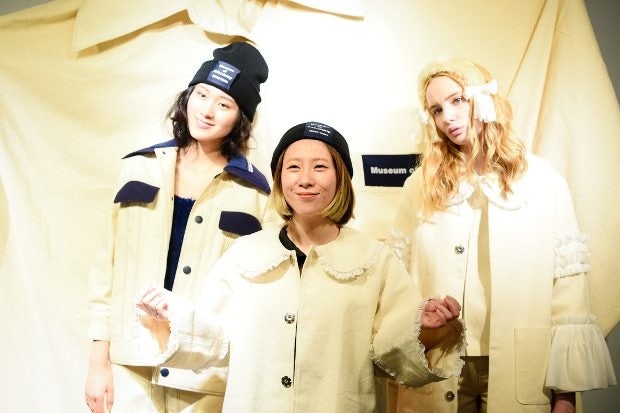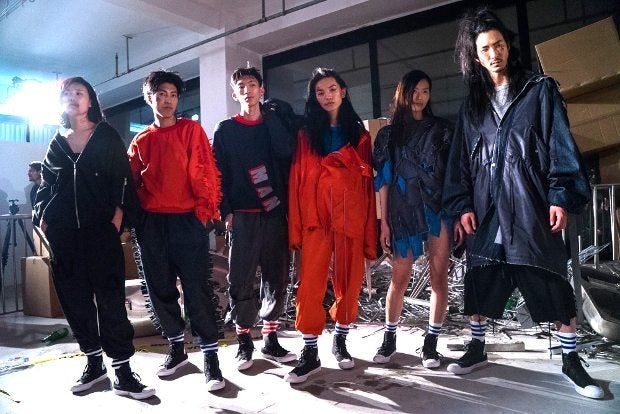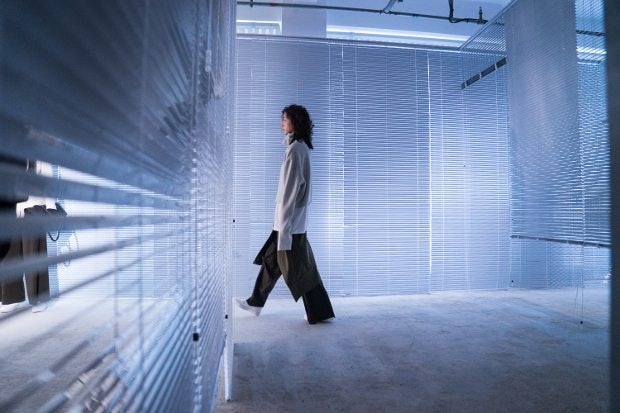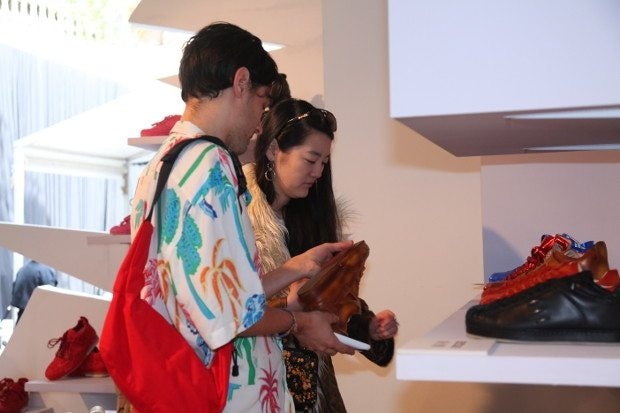
International buyers who offered high praise to the quality and scope of the Spring/Summer 16 edition of Shanghai Fashion Week returned this season to an even more diverse range of events, domestic designers and international brands, and streamlined showrooms.
“It was very New York,” said Opening Ceremony buyer Carol Song in an interview with press, referring to Shanghai Fashion Week's new presentation series, Labelhood. Located on an upscale dining and shopping street near the contemporary Rockbund Art Museum, Labelhood's platform gave 12 emerging Chinese designers the opportunity to showcase their collections in a more intimate setting, away from the catwalk.
The setups varied between designers. Toward one end of the scale, Momo Wang of the playful Museum of Friendship created a more casual setting, inviting fans to tour a room full of dancing models showing off her Autumn/Winter 16 collection to photographers, while at the other extreme, menswear designer Fengchen Wang opted for a performance in which VIP members of the audience were handcuffed in pairs to set the tone for a prison-themed mini runway show. “It was very interactive, and we liked that much better than sitting and watching a catwalk,” Song said. Her co-buyer, Jesse Hudnutt, echoed the sentiment. “It's great to see a show, but that was a cool update.”


Wang, who was recruited by Labelhood partner and multi-brand boutique Dongliang Studios, also did a presentation at New York Fashion Week in February, which was what inspired Shanghai organizers to create Labelhood, according to Lv Xiaolei, deputy secretary general of Shanghai Fashion Week. Lv said Labelhood also gave breakthrough talent a budget-friendly alternative to runway shows, which cost up to 120,000 RMB ($18,500) to do.
Several international corporations provided financial support or partnerships with Chinese designers this year (such as KFC, in the case of C.J. Yao), but backing from domestic select shops and PR companies was arguably a more significant driving force for this season's Shanghai Fashion Week. This evolution was clear in showrooms like Tube, which broke away from the Mode Shanghai tradeshow this season to move into a community space above the trendy Aunn Cafe. Founded by former 10 Corso Como marketing manager Zemira Xu, the off-schedule event featured presentations in addition to a five-day showcase of a highly curated selection of 13 clothing and accessory designers, many of them award-winning Chinese brands with international stockists, including Shushu/Tong, Xiao Li, Xu Zhi, and Angel Chen.

One of the main motivations behind Tube's move was a desire to build upon the nascent ecosystem of buyers in China by fostering a relationship and support between buyers and designers that extends beyond Shanghai Fashion Week itself. The showroom was open by invitation only. “We don't need 1,000 buyers,” Xu said. “We wanted to have a very good selection.” This includes repeat customers like Lane Crawford, Opening Ceremony, and H. Lorenzo.
Backing Xu's efforts is a team with experience at department stores like Lane Crawford, who are providing professional consultation to the brands down to every detail, including teaching them how to create line sheets and providing sales training. Looking ahead, Xu said the Tube platform for the designers will continue, but in other forms. Xu plans on doing pop-ups in international high-end department stores in key cities like Beijing as well as possibly returning to LA to showcase “the energy of the young generation.”

There was no doubt significant interest from overseas buyers like Song and Hudnutt, who once again attended shows to find talent for Opening Ceremony's Year of China collection. But also making the rounds at the trade shows were more buyers representing Chinese select shops from second- and third-tier cities, according to Shanghai Fashion Week staff member Andy Wu. The showrooms this season included Shanghai Fashion Week's own Ontime Show and Mode Shanghai, plus Tube, The Hub, Alter Showroom, Coda Showroom, and Showroom Shanghai.
Yet, many of these buyers are still at the experimental stage, and for more established brands, such as London-based Xu Zhi, the strategy for growing in China's market is a delicate interaction with global influence. “Internationally we sell to stores like Opening Ceremony and Dover Street Market, so in China's local retail market, we are really looking for partners that are trying to align themselves with these stores,” he said, adding that shops like Dongliang, Joy Market in Nanjing, and Beijing's Sanlipop are already operating at the desired level.
Shanghai Fashion Week's international attendees had mostly good things to say about the status of the fashion industry in China this year, with Lorenzo Hadar of H. Lorenzo calling Shanghai the number three fashion city in the world in terms of creativity and “cutting-edge” offerings. Hudnutt praised the number of designers who “had their own voice” and whose caliber met the standards set by the well-known brands in their store. “I would say that in general, Chinese designers are very proficient, very sensitive to the international market, to other designers they want to sit next to and price points they think are competitive,” he said. “So all in all, it’s been pretty strong.”